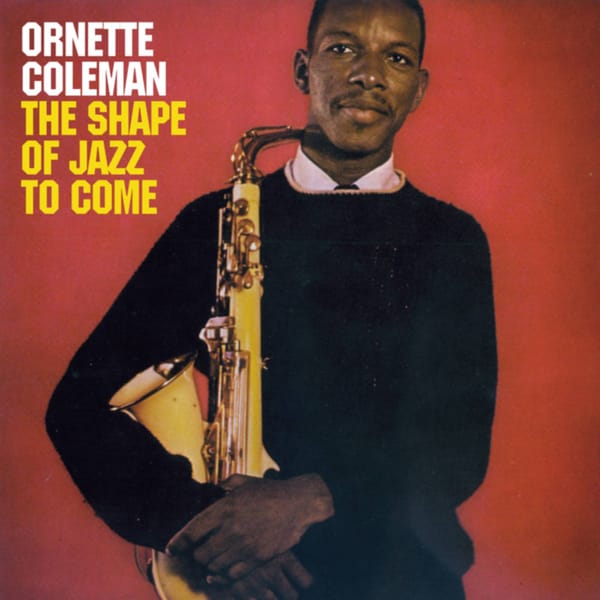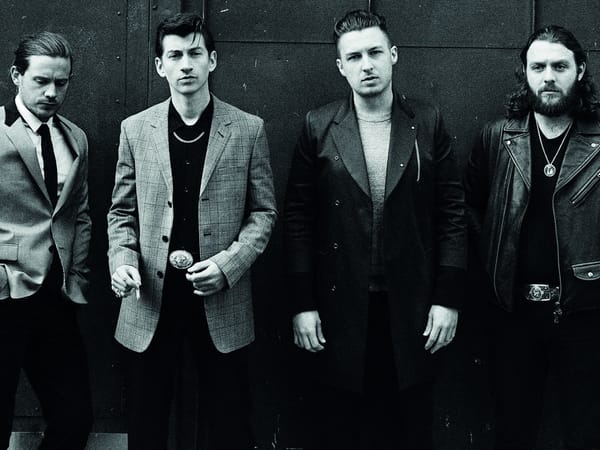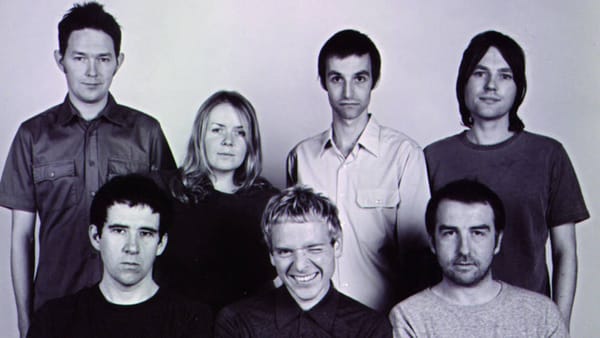FKA twigs, Feminism, and Female Sexuality on Video
Fred Fyles compares the different approaches FKA twigs and Sia take when it comes to their controlling their public image in music videos

Last month, in her debut at London’s Roundhouse, British auteur FKA twigs brought her unique vision to a crowd of 3,000. Entitled Congregata, a latin word for ‘gathering’, the two hour spectacle saw twigs put her indomitable singing and dancing talents to good use; she vogued alongside a dancer in fishnet stockings, was tossed up in the air by burly men with topknots, and changed outfits whilst contortionists kept the crowd entertained. It’s a far cry from her London debut, which took place at Hoxton’s Courtyard Theatre, a little less than a year ago, in front of an audience of just over 100. While at the Roundhouse she was front and centre, at the Courtyard she was kept shielded from the audience by a swirling mist, through which you could make out the petite figure who has become one of the most important voices in the British music industry. What was kept constant between the gigs, however, was her sheer gratitude at being able to perform; at the end of Congregata, twigs breaks character, telling the audience in a breathy voice that can barely contain its excitement how happy she is to be there. As if any other outcome were possible.
As twigs has become more and more popular, her presence in our visual landscape has become nearly inescapable; if you don’t spot her staring you down on the Summer 2014 issue of Dazed Magazine, her backcombed hair making her look like she’s been plugged into an electrical socket, you’ll see her looking out at you on a tube advert, a crimson mark covering, like some form of stigmata, a face photoshopped to look like porcelain. Of course, with her relationship with Robert Pattinson nearing the 6-month mark, you are even sure to find her gracing the Daily Mail’s ‘Sidebar of Shame’ every now and then.
While such visibility seems near-inevitable, singer Sia has managed a different approach
While such visibility seems near-inevitable in our social media, instagram-as-verb, post-panoptic world, Australian singer Sia has managed to take a different approach; while acknowledging that promoting her sixth album 1000 Forms of Fear necessitates the required media circuit of performances, photoshoots, and interviews, she has remained wilfully – and delightfully – obtuse in how she chooses to present herself. In what could be described as a publicity stunt, but really deserves the title of performance art, Sia has refused to show her face whilst performing for the last year. Instead, she has put the spotlight on Maddie Siegler, a 12-year-old dance prodigy from the TV series Dance Moms; Siegler takes centre stage alongside a range of celebrity cameos, from Lena Dunham to Kristen Wiig, while Sia turns away from the audience, her shoulderblades shuddering as she exercises her fearsome vocals. Like anything on the internet, if you want to see her face that much you can google it, but Sia’s damn sure not going to present herself up to you willingly.
Siegler has become some sort of an avatar for Sia, the precocious preteen presented as a public face for Sia’s music. In the video for ‘Chandelier’, Siegler flings herself around a dilapidated apartment, twisting and contorting her face into gruesome configurations, while in ‘Elastic Heart’ she dance-fights with Shia LaBeouf in a giant cage. Instead of presenting herself as a visual object, Sia subverts the audience’s expectation, delivering instead a piece of carefully choreographed performance art. What makes her decision – prompted, she says, by a desire “to not be famous” – all the more interesting is the fact that for all previous albums she has done she has shown her face quite willingly. You only have to go about halfway down the first page of YouTube results that pop up when you search ‘Sia’ to find her face: a video of a 2007 SXSW performance in which she addresses the audience head on, telling them in an excited voice that they were “radical”. So what changed? Perhaps the songwriting interval between her fifth and sixth albums, during which time she penned ‘Pretty Hurts’ for Beyonce and ‘Diamonds’ for Rihanna, gave her the opportunity to get used to eschewing the limelight.
In terms of music videos, twigs seems to stand in direct contradiction to Sia; while Sia’s rise to fame has led to her shielding herself from the public, as twigs has become increasingly popular, she has chosen to reveal herself more and more. In ‘Hide’, for example, one of the first singles from her excellent debut EP1, she is only visible from shoulders to knees; wiggling around to the beat of the song, she tenderly caresses an anthurium, clasped between her thighs, whose phallic spadix thrusts upwards. Even when she first decided to reveal herself to the world, she used technical trickery to add an uncanny valley element to her image; on the cover of EP2, her neck is subtly lengthened, and in the video for ‘Water Me’, the lead single from that release, twigs’ already wide eyes are enlarged, until she resembles something not-quite human.
FKA twigs' video for Pendulum is erotic, sensual, and achingly beautiful
As time has gone on, it seems that twigs has become more comfortable with revealing herself: covered in glitter, she is simultaneously strangled and caressed in her video for ‘Papi Pacify’; sitting upon a throne like an ancient Egyptian goddess, she is surrounded by an army of mini-twigs who krump and gyrate, in the Nabil-directed video for ‘Two Weeks’.
In her most recent video for ‘Pendulum’, possibly the best track off her stellar debut record LP1, twigs is hung, nearly nude, from a set of ropes braided from her own hair; a world away from Fifty Shades of Grey, the video is erotic, and sensual, and just heartbreakingly beautiful. As she slowly unties herself from the bonds she has created, the camera glides over her skin, taking in the grooves and imprints caused by the tight knots, until she is completely free, her waist-length hair flying like a tribute to liberation.
What sets twigs’ expression of female sexuality apart from her contemporaries is the fact that her videos lack a sense of aspirationalism; they stand on their own, and are contextualised by mental as opposed to material desire. To make a comparison: in Beyonce’s video for ‘Partition’, the most overtly sexual piece from her fifth album, and perhaps from her entire oeuvre, we are shown a world of consumerism and wealth. Sure, Beyonce is expressing her sexuality, allowing herself to be transformed into an object of desire, but we are also meant to covet other features of the video: the manor house with extensive grounds, through which a limousine slowly prowls; the bowls of fresh fruit at the breakfast table, presumably arranged by the high-fashion maid; the wide array of luxurious lingerie, most of which is encrusted with jewels. In ‘Partition’, Beyonce explicitly presents us with an array of objects that scream ‘wealth’, and thereby implicitly makes a direct connection between capitalist and sexual desire. In contrast, twigs’ videos seem divorced from time and space, instead presenting themselves as mere fragments of her overactive imagination; for her, the context for the videos is her own mental space, as opposed to anything that exists in the physical realm. twigs allows us the opportunity to look inside her fantasy world, but not to inhabit it.
Both artists have complete creative control over how they present themselves
There is also a key difference in how Sia and twigs place themselves within their own songs: twigs takes herself as the starting point, creating music that seems as personal and specific as someone’s diary, whereas Sia tends to – as her choice of presentation would suggest – lose herself with a crowd. In ‘Big Girls Cry’, for instance, Sia speaks about her experiences of loneliness – “I come home/on my own...I may cry ruining my make up...and I don’t care if I don’t look pretty” – before she bursts into the chorus, exclaiming over crashing drums and icy synths how “big girls cry when their hearts are breaking”. She explicitly aligns herself with a general group of people who have gone through similar pain, thereby allowing her song to strike a chord with individuals whilst maintaining a sense of generality.
twigs takes a different approach, sticking – almost aggressively – to the deeply personal. The nature of her lyrics make it little surprise that the most commonly used adjective to describe her music is “intimate”. In ‘Pendulum’, for example, the lyrical closeness is offset by the cavernous spaces between beats, which allow twigs to open up to herself, as she confesses the extent to which she yearns for another: “I’ve got time but you’re tired of waiting/you only want me in open spaces/come fill your gaps with people/I know no-one” she sighs, in a heartbreaking paean to unfulfilled desire. Similarly, in ‘Lights On’, she achingly sings of her fear of connections: “I shy away in my mind/in hopes that I could share this place with you...when I trust you we can do it with the lights on”. Is she exploring bodily insecurities she experiences when becoming intimate? Or is she despairing at her issues with trust, her inability to reveal her secrets to a confidant? Either way, she is treating her music as a confessional, bravely whispering her innermost feelings into a microphone. Like Sia, she manages to produce music that connects with many, but looks inward as a starting point.
It is up to trailblazers like Sia and twigs to try and change things in the music industry
While the two musicians may have diametrically different approaches to how they choose to present themselves, what they have in common is an unbending refusal to allow themselves to become a pawn in another’s game. They both have complete creative control over how they present themselves, something that is rare for any woman, let alone those in an industry that is as obviously sexualised as the music business. Speaking in 1982 about how her record company had presented her in the promotion of her debut LP The Kick Inside, Kate Bush said: “The media just promoted me as a female body. It’s like I’ve had to prove that I’m an artist in a female body”.
Sadly, it seems that little has changed; women are still presumed to be unable to create great music without having a man behind them, a fact lamented by musician-extraordinaire Bjork in a recent interview with Pitchfork.
It is therefore up to trailblazers like Sia and twigs to try and change things. Their approaches towards what they do with their bodies and their images are completely different, but that’s ok; in a complex world that is getting more and more convoluted every day, it is not my place to say which approach is better, or even to try and suggest that there is a ‘better’ approach. All I can do is be thankful that we have such artists, who will go to any lengths maintain an autonomous control over their image, thereby protecting their creative visions; it is these visions, these vital, meaningful, unapologetically confident visions, that we need most right now.









